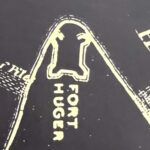Construction and Enslaved Labor
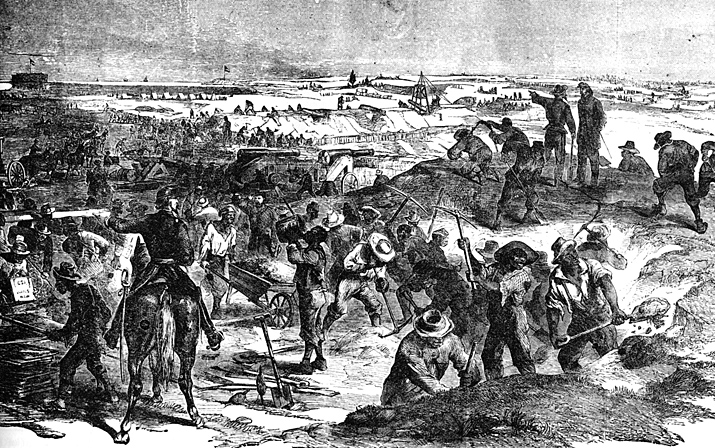
Construction of the Apalachee Batteries, using enslaved labor, began in 1862. Enslaved labor served an important role in the Confederate war effort. “Enslaved Black laborers cleared roads, built fortifications, and worked as teamsters and camp servants for their rebel masters,” noted historian Elizabeth Varon. Moreover, historian James McPherson pointed out: “So important were slaves in all these capacities that the military authorities impressed them into service from the beginning of the war, well before the Confederacy began drafting white men into the army. ”[1]
Historian Arthur Bergeron states that Confederate authorities discouraged the use of white soldiers to work on fortifications, likely because of the “demoralizing effects of doing the same work” as enslaved men.
Consequently, Mobile had a shortage of enslaved laborers during the summer of 1863. Therefore, Major General Dabney H. Maury, Mobile’s Confederate commander, sent soldiers into nearby counties to impress enslaved laborers. [2]
The Confederate policy of impressing enslaved men from different plantations to work on the fortifications freed their soldiers to perform other military duties. Both sides of the conflict recognized that slavery enabled the Confederates to field an army significantly larger in proportion to the white population in the North. The practice of impressing enslaved laborers and taking them to Mobile when they were needed in the fields resulted in protests from the planters. [3]
On March 11, 1863, Confederate Brigadier General Danville Leadbetter reported on the progress of the two yet-to-be-named Apalachee Batteries. He noted that the battery on the west side at the Apalachee and Blakely Rivers fork was completed, and six guns were mounted. “Neither its plan nor location is thought to be judicious,” wrote Leadbetter. Work began in early 1863 on a solid battery for four guns on the head of the Apalachee Island between the two rivers, which would have commanded both in the most effective manner.” Plans called for this battery to be armed with the guns from the ship Danube if others could not be had. The Confederates located the battery in a straight line along the island’s axis with a parapet on each side. The guns would be mounted on middle transom pintles so that they could fire on either channel. Between the guns are merlons three feet higher than the parapet. The rampart is bomb-proofed for men, stores, and a magazine, while the whole is surrounded by a ditch flanked by a stockade under cover of a glacis.
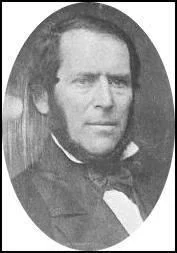
Leadbetter noted that they continued installing obstructive piling of this line to eight rows and cutting off the piles on the Blakely and Apalachee Rivers in front of the Apalachee Batteries. Several rows of piles had been driven in both channels immediately opposite the battery at the head of the island [Huger]. Barges, however, had to bring dirt for the battery, which required several openings in the line. This delayed progress on the obstructions during February.[4]
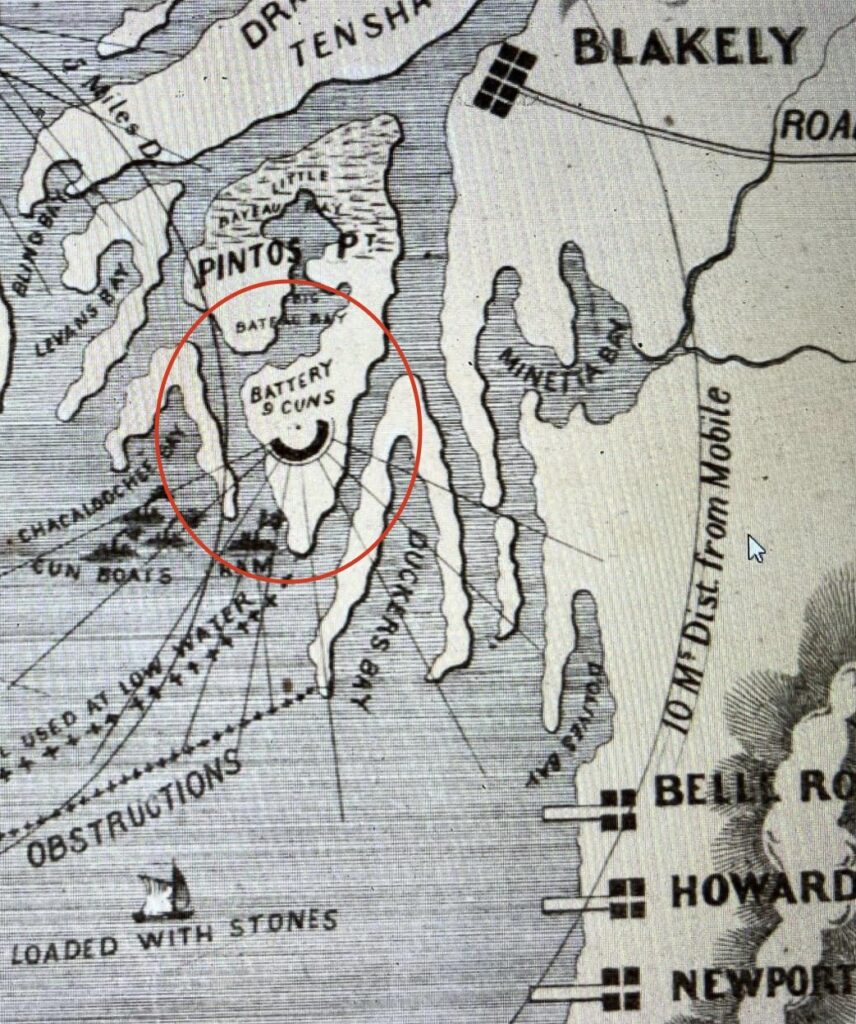
On March 15, 1863, Leadbetter reported to Richmond on operations for the defense of Mobile for February 1863. He noted that the weather has been unfavorable for all operations on the bay and harbor. He reported that the ditch of the battery at the head of Apalachee Island [Huger], between Apalachee and Blakely Rivers, had been excavated, the bomb-proof timbers erected, and a considerable part of the earthen embankments had been transported to and placed in the work. Being low and swampy, the site needed earth from the eastern shore to build the earthworks. “The work cannot be finished in the month of March, but it is hoped that the guns can be mounted,” wrote Leadbetter. He lamented that there needed to be more laborers to complete the fortifications around the city. Leadbetter noted that about 3,000 enslaved men labored on Mobile’s fortifications for the Confederate’s engineering service. [5]
In the same report, Leadbetter indicated that six feet was the greatest depth to be carried in at high tide by the Apalachee or Blakely River. If the US Navy launched an attack by water, they could not safely use any vessel drawing over 8 or 9 feet. He pointed out that if the US Navy attacked there, gunboats from the city could reinforce the batteries at the fork of the two rivers. An additional floating battery is understood to be well advanced toward completion. With this addition of at least eight 10-inch guns to the armament of the Apalachee Batteries, Leadbetter believed that the city could not be captured by any maritime force that could be brought against it. [6]
Later, in 1863, the Apalachee Batteries were named after fallen Confederate officers. The battery on the west side at the fork of the Apalachee and Blakely Rivers was named Battery Tracey in honor of Brigadier General Edward D. Tracey, who was killed at Port Gibson on May 1, 1863. Tracey, a graduate of the University of Georgia, was a delegate to the 1860 Democratic Convention. He was a Presbyterian deacon and attorney before the war. The battery head of the Apalachee island between the two rivers was named in honor of Lieutenant Commander Thomas B. Huger (pronounced Hu-gee) of the Confederate Navy. Huger was born in South Carolina. He joined the U.S. Navy as a midshipman in March 1835 and served until South Carolina seceded from the United States in January 1861. Huger was killed aboard the CSS McRae during the battle of New Orleans on April 25, 1862. [7]
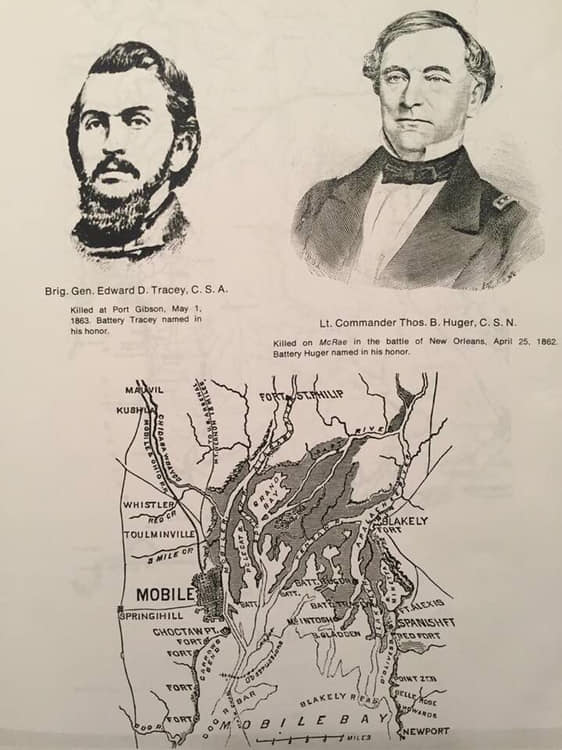
Meanwhile, planter protests continued. They alleged that Mobile’s Confederate Engineer Department kept their enslaved men beyond the stated sixty-day period in which they were to be impressed. Moreover, they complained about the treatment of their enslaved men. In response to the allegations, Confederate medical officials investigated and reported on the living and health conditions of the enslaved laborers at Mobile. One doctor reported that many of the enslaved men suffered from illness, and their food rations were insufficient for the maintenance of good health. Many of the enslaved men were housed in crowded and uncomfortable quarters at the Hitchcock Cotton Press. These quarters were located near the swamps, an area regarded as unhealthy. The doctor’s report found many cases of typhoid fever, measles, pneumonia, erysipelas, and “swamp fever.” [8]
Planter backlash and the lack of available enslaved men caused the District of the Gulf Chief Engineer, Lieutenant Colonel Victor Von Scheliha, to petition for a permanent engineering corps of Black laborers to replace the impressment system. In December of 1863, Von Scheliha reported to Alabama Governor Thomas Watts that Batteries Huger and Tracey still needed to be strengthened and would “equally require some additional work before they can be considered efficient works.” However, Von Scheliha, like his predecessor Leadbetter, pointed out that more enslaved men were needed. He then suggested to Watts that “a corps” of 5,000 Black laborers “be raised to serve during the war, and to be paid, clothed, and subsisted alike with our common soldiers.” [9]
On July 11, 1864, Von Scheliha declared in a report to authorities in Richmond that an attack on Mobile appeared imminent. He noted that his appeals for laborers were unanswered and that little progress on their defenses had been made due to the lack of laborers. Von Scheliha urged the construction of Fort Blakeley at once, should U.S. forces approach from Pensacola to protect Batteries Huger and Tracey. Despite the lack of progress on strengthening Mobile’s defenses, Von Scheliha declared the city would hold out as long as provisions lasted.[10]

After U.S. forces captured the lower defenses of Mobile Bay in August 1864, the Confederates anticipated an attack on the city. In the months preceding the campaign for Mobile, Confederate authorities strengthened their defenses and collected reinforcements to the town. Though some considered Mobile’s western shore defenses as strong as any place in the South, Rebel engineers recognized the vulnerability of the eastern shore. They determined that strong land fortifications on the bluffs of the Blakeley River were needed to protect Huger and Tracey. The land fortifications would also be used to threaten Federal columns advancing from the east.
On August 6, 1864, Von Scheliha reported to Richmond that he was strengthening obstructions between Tracey and Huger. His report illuminated his frustration with his insufficient labor force. “Would be ready to receive a serious attack if only furnished with hands I have so earnestly called for,” he complained. Von Scheliha described Batteries Huger and Tracey as “unreliable” and suggested that two iron-clad steam batteries belonging to the Navy should strengthen that weak point.[11]
On August 10, 1864, five days after U.S. Admiral David Farragut’s fleet successfully ran past Fort Morgan and entered Mobile Bay, Von Scheliha sent a dispatch to Maj. Gen. J. F. Gilmer, Chief of Engineer Bureau, in Richmond, Va. He reported that Battery Huger was being prepared for “five additional heavy guns—three 7-inch Brooke guns, two 8-inch double-banded columbiads—and one sea-coast 10-inch sea coast mortar.” At Tracey, he noted that new platforms were laid and guns mounted. [12]
Confederate Maj. Gen. Dabney H. Maury feared the U.S. Army might occupy the site of the 18th-century Spanish Fort and silence Huger and Tracey. His engineers decided to build a fortification there to protect the two river batteries from bombardment from the eastern shore and to threaten Federal columns that might advance in that vicinity from Pensacola, Fort Morgan, or other points from the east. On August 11, 1864, while the Federals besieged Fort Morgan at the bay’s mouth, plans to construct earthen fortifications were pushed forward around the old Spanish Fort. The Confederates built Fort Blakeley about four miles upriver to protect their line of communication to Spanish Fort, Huger, and Tracey. [13]
In an August 19, 1864 letter to the captain of the C.S.S Morgan, Von Scheliha confessed that he was “much afraid of not being able to render the two batteries what they ought to be.” He noted they were “faulty in location,” conception, and construction. Despite his inability to “alter them materially,” he expected “much good service” from the increased heavy artillery pieces recently added to the batteries. He said, “They can and will make an obstinate resistance, and I do not think that any of the enemy’s vessels will live long under their fire.” [14]
In early September 1864, Colonel John H. Gindrat assumed command of engineering operations on the eastern shore, including Spanish Fort and Fort Blakeley, and strengthened the existing Apalachee Batteries. He worked tirelessly and with a sense of urgency. Under his direction, the Confederates built a heavy battery at Redoubt 1, also known as the old Spanish Fort. Designed to prevent gunboats from ascending the river and removing torpedoes and obstructions, Redoubt 1’s commanding position over the Blakeley River made it nearly impossible for the U.S. Navy to reduce Batteries Huger and Tracey, which Von Scheliha believed were their most important works. [15]
During September 1864, after two weeks of no labor force present, “a gang of thirty hands” at Tracey moved earth (dirt) and sod from transports brought from Blakeley. They used the earth and sod to strengthen the fort’s magazine. The department’s chief engineer reported the “rest of the battery completed and in good order.” At Huger, about twenty-five enslaved laborers removed dirt from a barge, excavated, cut grass on the marsh, and made other preparations for additional magazines. The small crew of laborers also strengthened obstructions in the Apalachee River, repaired the wharf, installed water tanks at Huger, and forwarded material to Spanish Fort. [16]
Engineer reports for October indicate only some carpentry work done at Tracey. Von Scheliha reported that Tracey must remain as it is for the present even though it was “by no means in a highly satisfactory condition.” In November and December, laborers at Fort Blakeley loaded earth and sod on barges and flatboats bound for Huger. Laborers covered the new powder magazine with about eight feet and raised the parapet with the dirt transported from Blakely. However, engineer reports revealed that progress on the eastern shore defenses had slowed considerably due to the need for more hands. [17]
[1] Elizabeth R. Varon, Armies of Deliverance: A New History of the Civil War (New York: Oxford University Press, USA, 2019), 100-101; United States. War Department, The War of the Rebellion: A Compilation of the Official Records of the Union and Confederate Armies (1891), Ser. 1, Vol. 15, 1010–1012. Hereafter ORA; James M. McPherson, Ordeal by Fire: The Civil War and Reconstruction (New York: McGraw-Hill Companies, 1992), 289.
[2] Arthur W. Bergeron, Confederate Mobile (Baton Rouge: LSU Press, 2000), 112.
[3] Varon, Armies of Deliverance, 100-101; McPherson, Ordeal by Fire, 289; Bergeron, Confederate Mobile, 112.
[4] ORA, Ser. 1, Vol. 15, 1010–1012.
[5] ORA, Ser. 1, Vol. 15, 1014-1016.
[6] Ibid.
[7] ORA, Ser. 1, Vol. 26, 502-504; Caldwell Delaney, Confederate Mobile A Pictorial History (Mobile: The Haunted Bookshop, 1971), 100; “General Edward Dorr Tracy, Jr. (1833-1863),” Georgia Historical Society, last modified June 16, 2014, https://www.georgiahistory.com/ghmi_marker_updated/general-edward-door-tracy-jr/; “Lt. Thomas Huger, CSN,” Geni_family_tree, last modified June 28, 2019, https://www.geni.com/people/Lt-Thomas-Huger-CSN/6000000008882555923.
[8] Bergeron, Confederate Mobile, 110-111.
[9] Bergeron, Confederate Mobile, 113-114; ORA, Ser. 1, Vol. Vol. 26, 502-504.
[10] ORA, Ser. 1, Vol. 39, Pt. 2, 704-705.
[11] ORA, Ser. 1, Vol. 39, Pt. 2, 758-759.
[12] ORA, Ser. 1, Vol. 39, Pt. 2, 769, 776.
[13] Maury, “Defence of Spanish Fort, “133; ORA, Vol. 39, pt. 2, 772; Allen, “Operations against the City of Mobile,” 72.A line of communication refers to the route that connects an operating military unit with its supply base. Supplies and reinforcements are transported along the line of communication.
[14] ORA, Ser. 1, Vol. 39, Pt. 2, 782.
[15] ORA, Vol. 39, Pt. 2, 815, 819, 842. A redoubt is a small fort, an enclosed defensive work. Bombproofs are underground shelters for protection against artillery fire.
[16] ORA Vol. 39, Pt. 2, 815, 842; Vol. 39, Pt. 3, 794.
[17] ORA Vol. 39, Pt. 3, 851, 887, 895; ORA, Vol. 45, Pt. 2, 678, 735.
